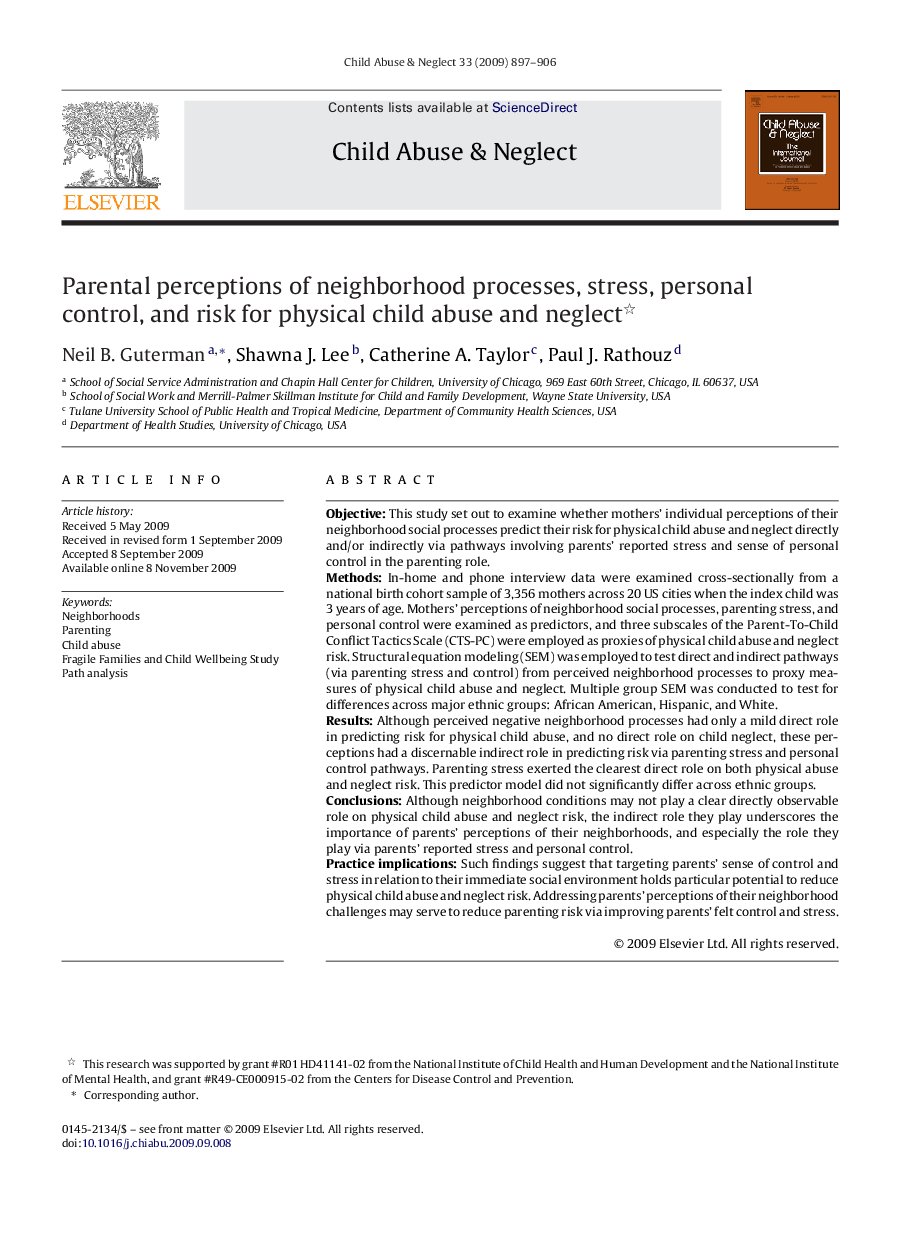| کد مقاله | کد نشریه | سال انتشار | مقاله انگلیسی | نسخه تمام متن |
|---|---|---|---|---|
| 345107 | 617484 | 2009 | 10 صفحه PDF | دانلود رایگان |

ObjectiveThis study set out to examine whether mothers’ individual perceptions of their neighborhood social processes predict their risk for physical child abuse and neglect directly and/or indirectly via pathways involving parents’ reported stress and sense of personal control in the parenting role.MethodsIn-home and phone interview data were examined cross-sectionally from a national birth cohort sample of 3,356 mothers across 20 US cities when the index child was 3 years of age. Mothers’ perceptions of neighborhood social processes, parenting stress, and personal control were examined as predictors, and three subscales of the Parent-To-Child Conflict Tactics Scale (CTS-PC) were employed as proxies of physical child abuse and neglect risk. Structural equation modeling (SEM) was employed to test direct and indirect pathways (via parenting stress and control) from perceived neighborhood processes to proxy measures of physical child abuse and neglect. Multiple group SEM was conducted to test for differences across major ethnic groups: African American, Hispanic, and White.ResultsAlthough perceived negative neighborhood processes had only a mild direct role in predicting risk for physical child abuse, and no direct role on child neglect, these perceptions had a discernable indirect role in predicting risk via parenting stress and personal control pathways. Parenting stress exerted the clearest direct role on both physical abuse and neglect risk. This predictor model did not significantly differ across ethnic groups.ConclusionsAlthough neighborhood conditions may not play a clear directly observable role on physical child abuse and neglect risk, the indirect role they play underscores the importance of parents’ perceptions of their neighborhoods, and especially the role they play via parents’ reported stress and personal control.Practice implicationsSuch findings suggest that targeting parents’ sense of control and stress in relation to their immediate social environment holds particular potential to reduce physical child abuse and neglect risk. Addressing parents’ perceptions of their neighborhood challenges may serve to reduce parenting risk via improving parents’ felt control and stress.
Journal: Child Abuse & Neglect - Volume 33, Issue 12, December 2009, Pages 897–906